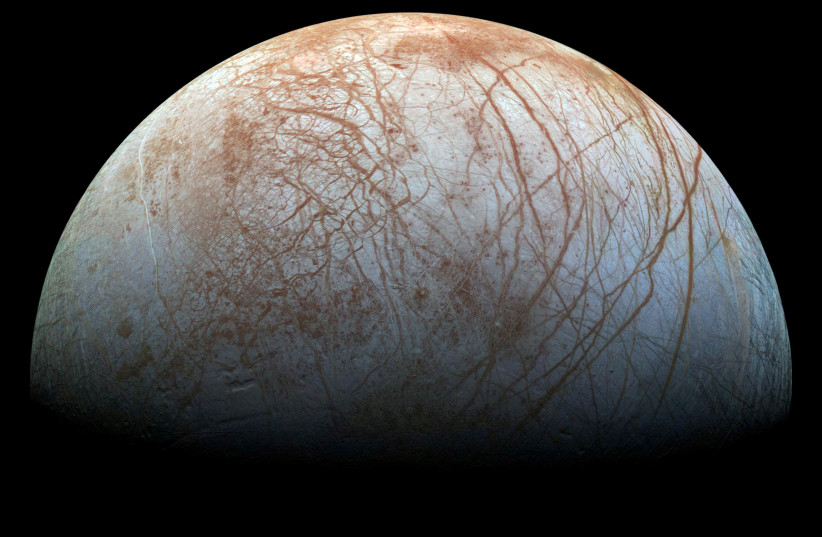A new picture of Jupiter's moon Europa was shared by NASA's Juno spacecraft in its recent close approach to the moon on Thursday.
The picture of Europa reveals detail on a region of the surface near the moon's equator. Of note is the rugged terrain filled with shadow-casting rocks and a possible degraded impact crater.
This marks the second close flyby Juno had with one of Jupiter's four largest moons, known as the Galilean moons. In 2021, NASA's Juno probe flew past and took pictures of the massive moon Ganymede, the largest moon in the entire solar system that's even bigger than the planet Mercury. In 2023 or 2024, Juno is also set to fly past Jupiter's moon Io, the single most volcanic object in the solar system.
The image of Europa is especially significant because it is the first close-up picture in over 20 years of this Jovian moon, a cosmic object that has fascinated scientists for years.

Why is Europa so fascinating?
Jupiter, the solar system's largest planet, is home to a wide array of moons.
Some of these moons, like Europa, have been the subject of considerable interest.
Europa, Jupiter's fourth-largest moon and the sixth-largest moon in the solar system, has long been the subject of scientific inquiry due to the belief that an ocean of water may reside underneath its icy surface.
The idea of Europa being home to life is nothing particularly new, and has been a staple of science-fiction for many years – most notably in the book and film adaptation of 2010: Space Odyssey Two by Arthur C. Clark. However, a discovery by NASA in 2018 of water plumes supported earlier evidence of the hypothesized oceans of water beneath the ice.
It is for this reason that NASA is set to launch its Europa Clipper mission to study the moon and see if it could support life.
